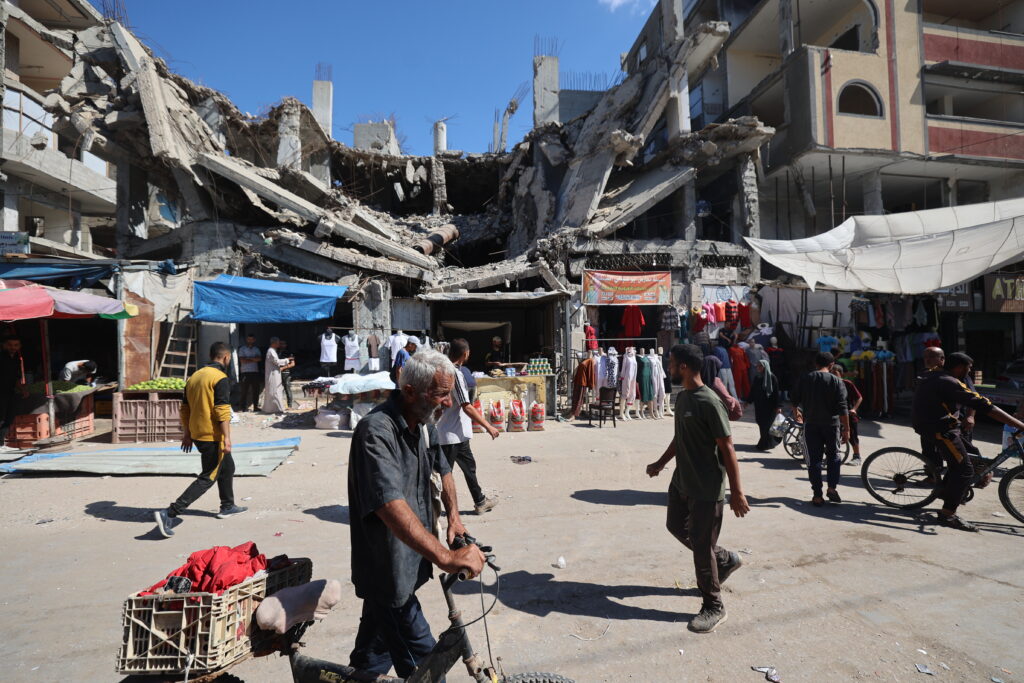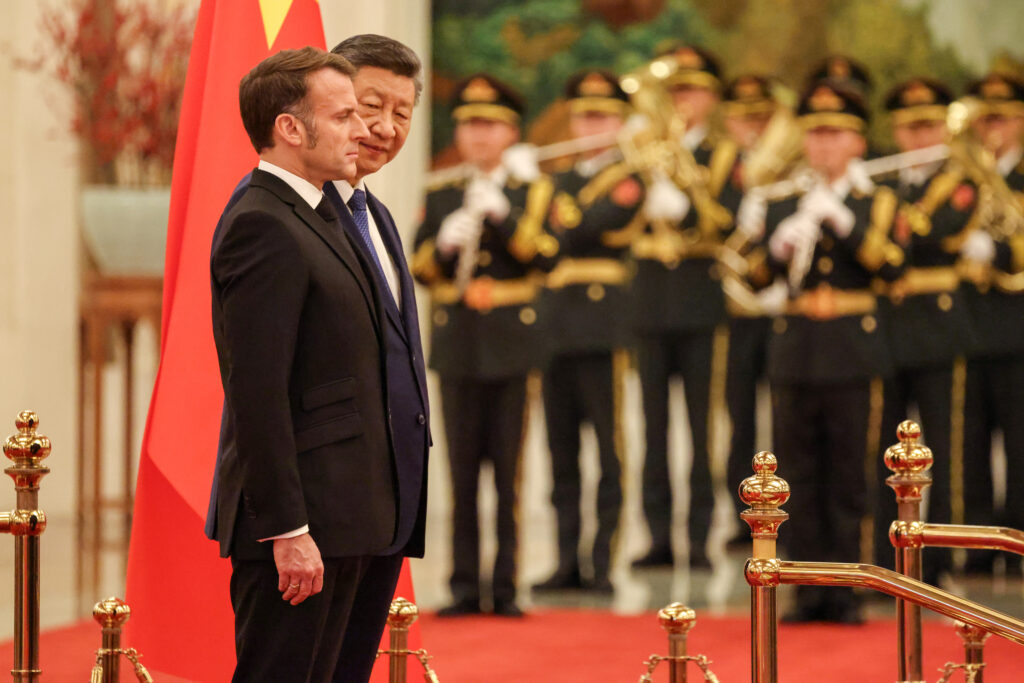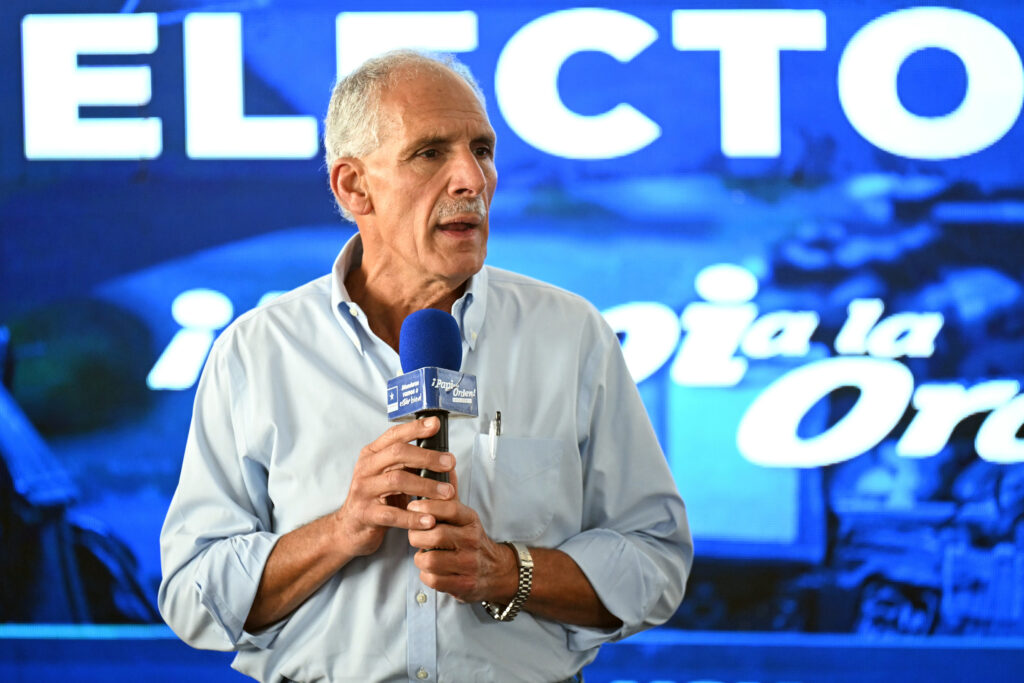Pétrole, armement et diplomatie: Poutine en Inde pour une coopération dont l’étendue est “immense”
Vladimir Poutine est arrivé jeudi en ami en Inde, pays avec lequel il juge “immense” l’étendue de la coopération, dans le contexte des sanctions douanières imposées par Donald Trump en représailles à ses achats de pétrole russe en pleine invasion de l’Ukraine.Le président russe, qui ne s’était plus rendu à New Delhi depuis 2021, l’année ayant précédé le déclenchement de l’offensive militaire qu’il a ordonnée sur le sol ukrainien, a été accueilli à l’aéroport de la capitale indienne par le Premier ministre Narendra Modi. Dans la soirée, il devait dîner en privé avec lui, en préambule à leurs entretiens officiels vendredi.Vladimir Poutine, qui est accompagné de son ministre de la Défense, Andreï Belooussov – la question d’éventuels accords sur des avions de chasse et des systèmes de défense antiaérienne devant en principe être abordée -, a déclaré être “très heureux” de revoir son “ami” Narendra Modi, dans un entretien accordé à India Today avant son départ. “L’étendue de notre coopération avec l’Inde est immense”, a-t-il insisté, citant la construction navale et l’industrie aéronautique, l’énergie nucléaire et l’exploration spatiale. Le chef de l’Etat russe a par ailleurs souligné que les négociations en cours avec les Etats-Unis sur l’Ukraine constituaient “une tâche complexe, une mission ardue que le président Trump s’est lui-même donnée”. “Parvenir à un consensus entre des parties en conflit n’est pas chose aisée mais je crois que le président Trump s’y emploie sincèrement”, a-t-il poursuivi, avant d’ajouter: “Je pense que nous devons nous engager dans cet effort plutôt que d’y faire obstruction.”Narendra Modi s’est de son côté dit “ravi d’accueillir (son) ami, le président Poutine”. “Je me réjouis de nos échanges ce soir et demain”, a-t-il écrit sur X. “L’amitié indo-russe est une amitié éprouvée par le temps qui a grandement profité à nos peuples”, a martelé le chef du gouvernement indien, publiant une photo d’eux deux prise dans la voiture qui les transportait.Voici les principaux sujets au menu de leurs discussions :- PétroleL’Inde est l’un des principaux importateurs de pétrole russe, à rebours des Occidentaux qui ont pris des mesures de rétorsion dans ce domaine à cause de la guerre en Ukraine.En 2024, la Russie a livré aux raffineries indiennes 36% du brut qu’elles utilisent, selon la plateforme d’informations commerciales Kpler.L’Inde, qui importe 85% de l’or noir qu’elle consomme, y a trouvé moyen de remplir ses cuves à bon prix. Mais les Etats-Unis l’ont punie en août d’une surtaxe de 50% sur ses exportations au motif que ces achats financent l’effort de guerre russe en Ukraine.Donald Trump a assuré que Narendra Modi lui avait promis de renoncer au pétrole russe, en pleine tractations commerciales entre leurs deux pays.New Delhi ne l’a pas confirmé. Mais les statistiques récentes montrent que les livraisons de brut par la Russie aux Indiens ont baissé.”Nous n’avons aucun doute quant au fait que ces échanges bénéficient largement à l’Inde et sont avantageux pour les deux parties”, a noté avant le voyage du président russe son porte-parole, Dmitri Peskov.- DéfenseMême si l’Inde s’est récemment tournée vers d’autres fournisseurs – dont la France – et privilégie les armes qu’elle produit elles-mêmes, la Russie reste une de ses principales sources d’approvisionnement en matériel militaire.Selon l’Institut international pour la recherche sur la paix (SIPRI) de Stockholm, la part des équipements russes dans l’arsenal indien a reculé de 76% sur la période 2009-2013 à 36% en 2019-2023.Tirant les enseignements de la confrontation militaire avec le Pakistan en mai, New Delhi a manifesté son intérêt pour l’achat de nouveaux missiles sol-air russes de type S-400.”Il ne fait aucun doute que ce sujet sera évoqué pendant la visite”, a affirmé M. Peskov.La presse indienne a par ailleurs souligné l’intérêt de l’armée indienne pour le chasseur russe de 5e génération Su-57.- CommerceLa Russie est le quatrième partenaire commercial de l’Inde avec des échanges bilatéraux d’un montant de 68,7 milliards de dollars – un record – sur l’année 2024-2025, d’après les statistiques officielles.Mais leurs relations restent très déséquilibrées. Plus de 90% de cette somme – 63,8 milliards de dollars – provient des importations indiennes, pour l’essentiel d’hydrocarbures. En retour, l’Inde vend à la Russie des machines-outils et des médicaments pour l’essentiel.”Nous voulons diversifier nos échanges et faire en sorte de les rééquilibrer”, a fait savoir un diplomate indien de haut rang s’exprimant sous le couvert de l’anonymat.”Notre volonté est de maintenir et même d’accroître le volume de nos échanges bilatéraux”, a pour sa part lancé Dmitri Peskov, “sans laisser qui que ce soit d’autre s’en mêler”.- DiplomatieLe même diplomate indien considère que les relations de son pays avec Moscou sont “les plus stables des temps modernes”.Jusqu’à ce jour, l’Inde a évité d’ouvertement condamner l’invasion de l’Ukraine, tout en réussissant à maintenir ses liens avec l’Europe et les Etats-Unis.Narendra Modi a rarement haussé le ton vis-à-vis de Vladimir Poutine sur ce thème, sauf en 2022 au cours d’une rencontre en Ouzbékistan, quand il avait exigé la fin de la guerre “le plus vite possible”.Il a depuis répété à de multiples reprises son attachement à un ordre mondial “multipolaire” et résisté aux injonctions occidentales à s’éloigner de la Russie.
Eurovision faces withdrawals after Israel OK’d to compete
The Eurovision Song Contest — the world’s largest live music competition — faced the prospect of mass withdrawals, after organisers opted not to vote on Israel’s future participation, allowing it to take part in next year’s event.Widespread opposition to the war in Gaza had led to mounting calls for Israel to be excluded from the annual contest, and after suspicions about the manipulation of the voting system.But the European Broadcasting Union (EBU) said after a meeting in Geneva that there had been “clear support” among members for reforms implemented to “reinforce trust and protect neutrality”.”A large majority of members agreed that there was no need for a further vote on participation and that the Eurovision Song Contest 2026 should proceed as planned, with the additional safeguards in place,” a statement read.Yet moments after the EBU statement public broadcasters in Spain, Ireland and the Netherlands — who had all backed Israel’s exclusion — said their countries would not take part next year.”The situation in Gaza, despite the ceasefire and the approval of the peace process, and the use of the contest for political goals by Israel, makes it increasingly difficult to keep Eurovision a neutral cultural event,” said Alfonso Morales, the secretary general of Spain’s RTVE.Ireland’s RTE said its participation would be “unconscionable given the appalling loss of lives in Gaza and the humanitarian crisis there, which continues to put the lives of so many civilians at risk”.AVROTROS in the Netherlands said a Dutch presence at next year’s event “cannot be reconciled with the public values that are fundamental to our organisation”.Iceland has previously threatened to withdraw, while others, including Belgium, Finland and Sweden, have also said they were considering a boycott over the situation in Gaza.- Voting scrutiny -Israel’s President Isaac Herzog welcomed the EBU decision and said his country “deserves to be represented on every stage around the world”.In the run-up to the meeting, held behind closed doors and under tight security in Geneva, EBU members appeared divided on the issue, with Israel winning support notably from Germany.While Eurovision is supposed to be above politics, Chancellor Friedrich Merz — a strong Israel supporter — suggested in October that he would back Germany’s withdrawal if Israel were excluded.Eurovision voting arrangements came under scrutiny after Israel’s Yuval Raphael — a survivor of Hamas’s October 7, 2023 attack — surged into second place after the public vote at the last edition this year.Similar concerns about voter manipulation were raised the previous year when Israel’s Eden Golan was catapulted into fifth place despite lacklustre scoring from national juries.Eurovision entries are scored first by professional juries, then the public by phone, text or online, which often radically alters the leader board.Countries cannot vote for their own entry, but AVROTROS accused Israel of “proven interference” at the last event this year by lobbying the public overseas to vote for it.- ‘Trust and transparency’ -The EBU had planned to convene member broadcasters in November for a vote on the issue. But a few days after the October 10 announcement of a ceasefire agreement between Israel and Hamas, the EBU postponed a decision until its ordinary general assembly on December 4 and 5.Last month, in an apparent bid to avoid a contentious vote, the EBU announced that it had changed Eurovision voting rules to address members’ concerns and to strengthen “trust and transparency”.Austria’s public broadcaster ORF, next year’s Eurovision host, has expressed hope that a consensus can be reached so that it can host “as many participants as possible”.Israel would not have been the first country excluded from Eurovision.Russia was barred from taking part following its 2022 invasion of Ukraine, while Belarus was excluded a year earlier after the contested re-election of President Alexander Lukashenko.burs-apo/phz
What should happen next under the Gaza peace plan?
Negotiations on the next stage of the Gaza ceasefire continue without significant progress at a moment when the truce appears particularly fragile.The United States, alongside Qatar and Egypt, secured a truce in Gaza that came into effect on October 10 and has mostly halted two years of war between Israel and Palestinian militant group Hamas.The United Nations has since endorsed President Donald Trump’s peace plan, yet there has been little progress over issues of reconstruction and post-war governance. AFP explains what could happen next:- What is the plan? -The ceasefire was the result of Trump’s pressure on Israeli Prime Minister Benjamin Netanyahu to end the war triggered by Hamas’s attack on Israel on October 7, 2023.It remains fragile as both sides accuse each other almost daily of violations.Trump’s plan has various stages: a truce, the withdrawal of Israeli forces and setting up a new administration for Gaza, and then finally the reconstruction of the territory levelled by Israel’s retaliatory military campaign.The first phase included: – a withdrawal of Israeli forces on October 10 to a line that still gave them military control of over half of Gaza.- the release of all hostages, living or dead, held by Hamas or its allies.- an increase in humanitarian aid entering Gaza.Though all living hostages were released on October 13, one hostage body is still in Gaza.For now, the Israeli government demands that the last hostage’s remains are returned before any talks begin on the second phase via mediating countries: United States, Egypt, Qatar and Turkey.Egypt will also host a conference on Gaza’s reconstruction that will focus on the territory’s humanitarian needs but no date has yet been set.A lack of progress is not surprising. Experts point out the previous truce collapsed in March before the second phase had even begun.- Why is there little progress? -The process seems to be stuck mainly due to the Trump plan’s grey areas.”Israel doesn’t really seem to be putting any serious thought into what the post-war phase is supposed to look like,” said Michael Milshtein, a researcher at Tel Aviv University.The UN Security Council resolution, which endorsed the Trump plan in November, authorises the formation of a “Board of Peace”, a transitional governing body for Gaza — which Trump would theoretically chair.It also authorises the creation of an international stabilisation force to help secure border areas and demilitarise Gaza — but there is no deadline.Questions over how the plan would work in practice have generated debate in Israel and among the Palestinians.Israel wants Hamas to disarm and the group says it is not opposed to handing over part of its arsenal, but only as part of a Palestinian political process.Some ministers in Netanyahu’s government — one of the most right-wing in Israel’s history — reject the Trump plan.But Milshtein cautioned against taking “all those dramatic outbursts from government ministers too seriously.”- What are the political implications? -Trump is in the driver’s seat.”Israel has lost room to manoeuvre, has lost leverage,” Milshtein said, noting how different the situation is now compared to two months earlier when Netanyahu still made “maximalist” demands.”If Trump decides Turkey is a good partner for the international force, then that’s what’s going to happen,” Milshtein said.Meanwhile, Palestinian movements continue to work under Egypt’s auspices to establish a “technocratic, apolitical committee of competent Palestinians” from Gaza, tasked with running Gaza’s civil service and administration.”The approved names meet Israel’s requirements: neither Hamas nor Fatah (the movement of Palestinian President Mahmud Abbas),” said Palestinian politics expert Mkhaimar Abusada.”But at the end of the day, it’s not Israel who’s going to decide on every single thing here, they also have to deal with the Americans.”- What to expect? -Maintaining the truce is the priority at this stage.”We’re only talking about keeping a ceasefire alive here,” said Joost Hiltermann of the International Crisis Group, noting that the overall process had not been completed since some issues still needed to be resolved.But the Trump administration’s determination “may give grounds for a measure of optimism”, Hiltermann added.Numerous visits by US officials to Netanyahu in the past two months show there is fierce pressure on Israel to enforce the ceasefire, Abusada said.”The situation remains very murky, partly because Hamas itself is not straightforward about what it wants,” Abusada added.
Ukraine, commerce… Macron presse Xi, qui refuse toute responsabilité dans la guerre
Le président français Emmanuel Macron a pressé jeudi son homologue chinois Xi Jinping d’oeuvrer à la fin de la guerre en Ukraine et à corriger les déséquilibres commerciaux, mais a entendu son hôte rejeter fermement toute part de responsabilité dans la poursuite de la crise ukrainienne.”La Chine soutient tous les efforts pour la paix” et …
Ukraine, commerce… Macron presse Xi, qui refuse toute responsabilité dans la guerre Read More »
Honduras : Asfura, adoubé par Trump, reprend l’avantage dans les résultats très serrés de la présidentielle
Le Honduras est toujours plongé dans l’incertitude sur le résultat de la présidentielle de dimanche, l’homme d’affaires de droite Nasry Asfura, soutenu par Donald Trump, ayant repris l’avantage jeudi face au candidat libéral Salvador Nasralla dans les résultats très serrés du scrutin. Le dépouillement de cette élection à un seul tour, interrompu lundi matin, a …
La Finlande sommée de réparer les injustices commises envers les Sami
“Beaucoup d’enfants ont perdu le contact avec leur identité”: la Finlande doit réparer les injustices historiques commises à l’encontre du peuple Sami, exhorte une commission pour la vérité et la réconciliation en remettant au gouvernement un rapport élaboré pendant quatre ans.Mandatée en 2021, cette commission a récolté des témoignages auprès de quelque 400 indigènes Sami et …
La Finlande sommée de réparer les injustices commises envers les Sami Read More »






